Warong Nasi Pariaman: Possibly SG’s oldest surviving nasi padang stall, dating back to 1948
Close to 20 years before Singapore became an independent republic on 9 August 1965, Warong Nasi Pariaman started selling authentic nasi padang from a humble coffee shop at the corner of Kandahar Street. The year was 1948, and Singapore had just gone through the Japanese occupation in World War II.
Let’s skip to the present. 74 years later, Warong Nasi Pariaman can still be found at its original coffee shop, and just like it did in the past, this family-run nasi padang stall is still dishing out authentic Padang dishes to its loyal customers, many of whom have been frequenting it for multiple generations.
It’s believed that Warong Nasi Pariaman is the oldest surviving nasi padang stall in Singapore. Even the National Library Board’s article says so!
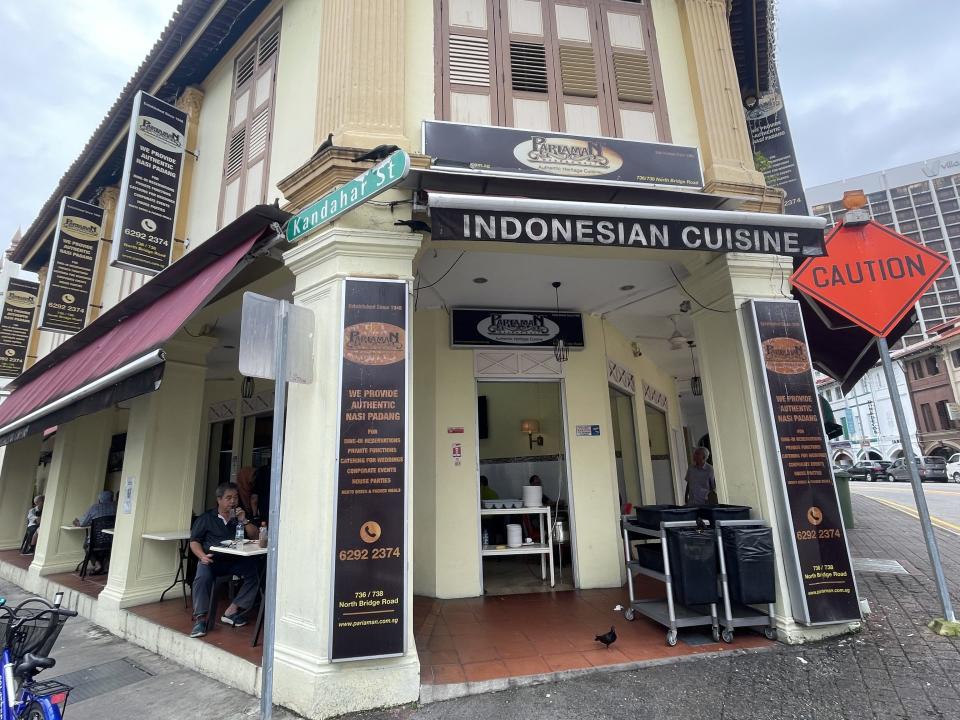
Warong Nasi Pariaman was established by Isrin bin Ibrahim and his wife, Rosna binte Zainal Abidin. They migrated to Singapore in the 1940s and operated their nasi padang business from a street stall, before renting a shophouse in 1948 (the very same one at the corner of Kandahar Street) and named the business after their hometown of Pariaman, a city in West Sumatra.
According to the NLB article, Warong Nasi Pariaman was so popular in the 1990s that they prepared between 50kg to 60kg of rice per day! Isrin and his family were sticklers for tradition, and insisted on quality ingredients and authentic cooking styles throughout the past decades, including the Minangkabau tradition of cooking rendang over a charcoal fire.
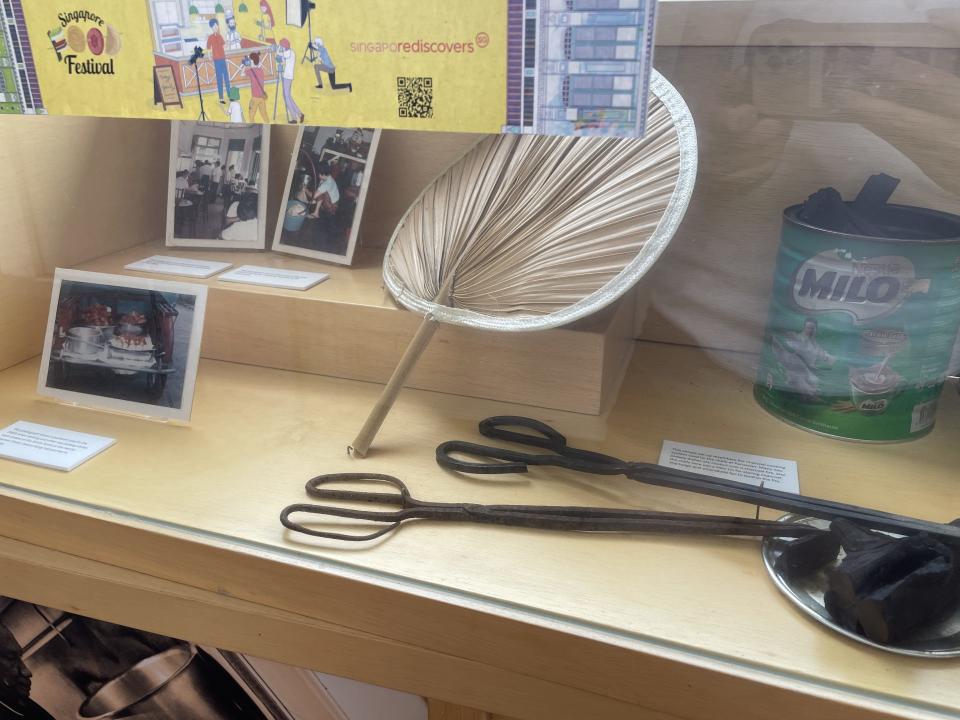
For those paying Warong Nasi Pariaman a visit, I highly urge you to take a look at the small glass display along the main corridor.
This display was created as part of National Heritage Board’s Singapore Food Festival, and contains historic photographs of Warong Nasi Pariaman in the 1980s. There are also mock set-ups that are meant to resemble the charcoal cooking style that Warong Nasi Pariaman used, complete with Milo tins that were used to store the charcoal.
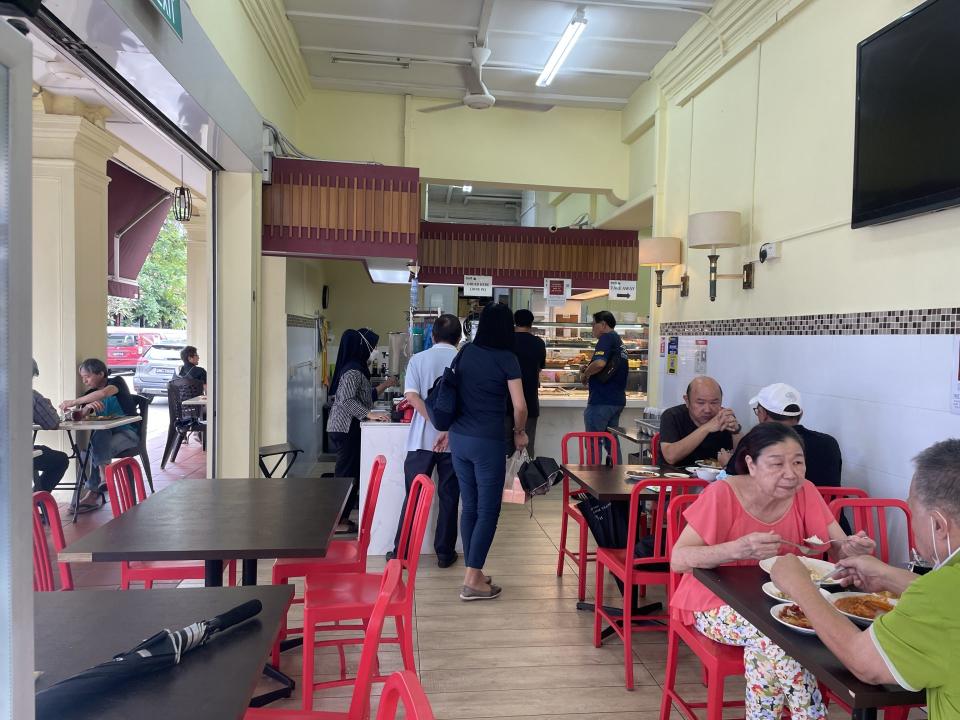
Ever since its inception in 1948, Warong Nasi Pariaman has only undergone one renovation in 2013, but its interior is still no-fuss and simple. In fact, if it weren’t for the NHB display which informed me of Warong Nasi Pariaman’s rich history, I wouldn’t have guessed that this homely coffee shop dates back 6 decades!
I visited on a Monday afternoon around 11am and found the coffee shop positively buzzing with noise. It was an organised form of chaos— you had customers “chope-ing” tables with umbrellas and tissue packets, while others stood around waiting for an open table. Near the ordering station, there were 2 to 3 queues, all of which served different purposes— 1 for takeaway, 1 for dine-in, and 1 for the cashier.
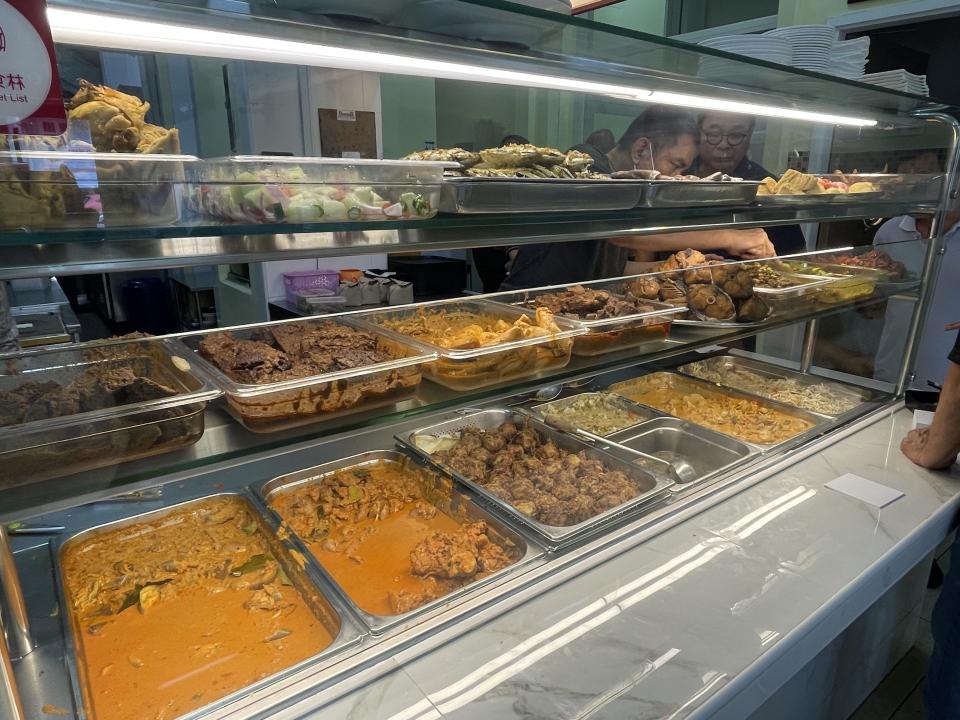
Isrin has retired and the family-run business is now helmed by second-generation owner Encik Jumrin Isrif and three generations of his extended family. Thankfully, the food served is still authentic, and its most popular dishes include Beef Rendang, Ayam Bakar and Gulai Nangka (jackfruit curry).
Be sure to arrive early though, as its dishes (especially the jackfruit curry) are said to sell out fast!
What I tried at Warong Nasi Pariaman
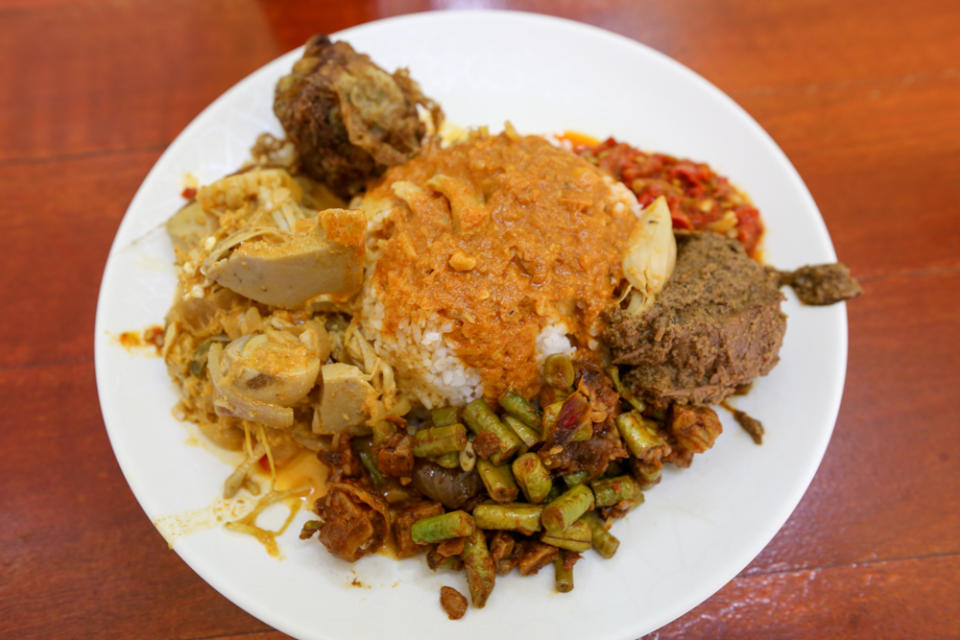
I decided to order my nasi padang campur style (aka all mixed on one plate), but you can choose to order yours hidang style (aka family style, where each selection is placed on individual plates).
I got Gulai Nangka (jackfruit curry), Sambal Goreng, Beef Rendang (S$4.50) and Bagedel (S$1). The staff lumped the cost of the 2 vegetables together with the rice and charged me S$3, making the total cost of this plate of nasi padang S$8.50. And that’s before GST, mind you! After 7% GST, the final cost came to S$9.
I must say, this is not the most wallet-friendly nasi padang.
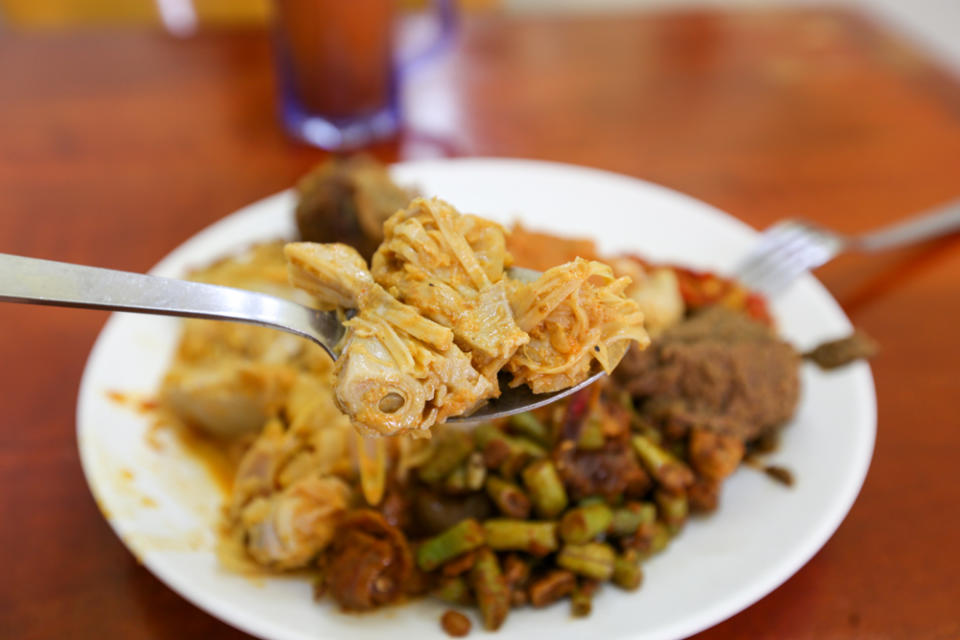
This was my first time trying Gulai Nangka, so I was incredibly excited to see how it’d turn out.
The jackfruit had soaked up all that lovely curry gravy, resulting in soft yet chewy bites that resulted in explosions of curried spice and coconut goodness. The texture fascinated me— it reminded me of stewed cabbage, just with a firmer exterior.
My only gripe would be that some pieces came complete with the core of the young jackfruit, which was too tough to eat. I’d still order this again though, as I loved the way it had absorbed all that lemak curry gravy, making it a real joy to slowly devour.
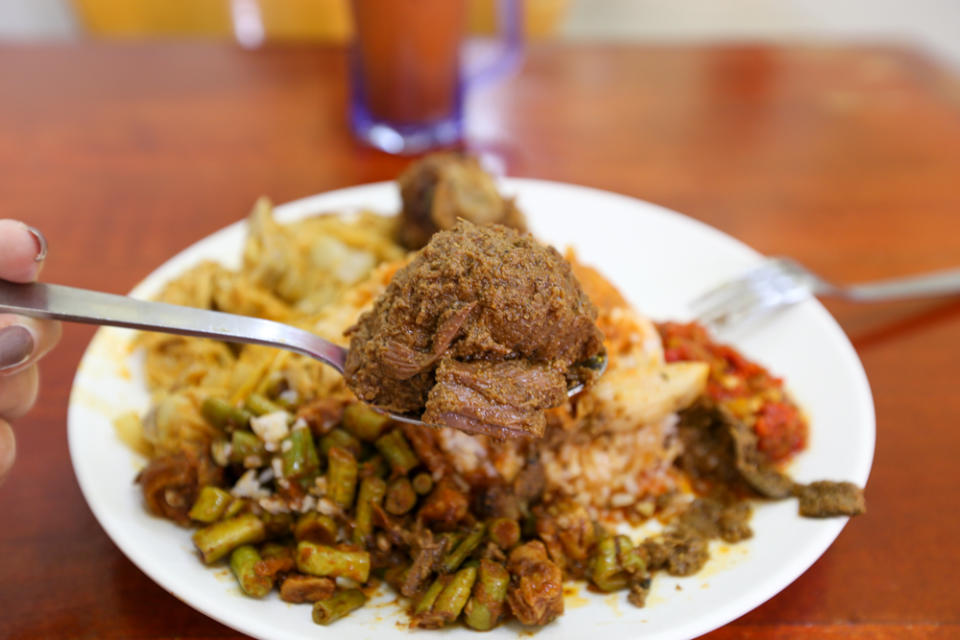
As the priciest thing on my plate, I had hoped that Warong Nasi Pariaman would be relatively generous with the Beef Rendang, but instead was sadly disappointed to only receive 1 piece that was roughly the size of my metal spoon.
This single piece cost me S$4.50— I mean, I know whole meals that cost almost half of this!
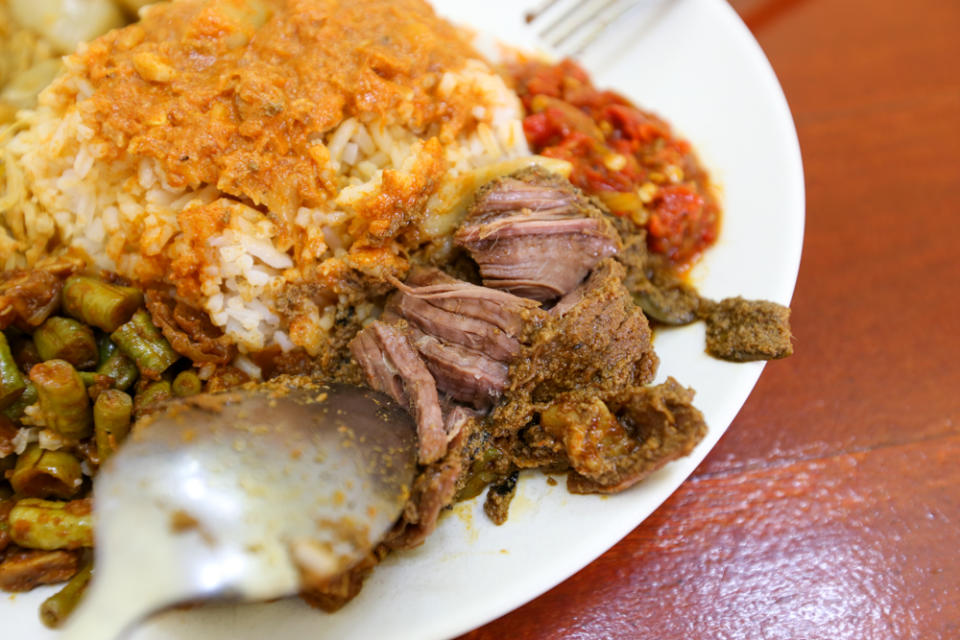
With a single push of my spoon, the Beef Rendang came apart into clean, thin strips of meat. Each piece of beef was incredibly juicy and I could taste fragrant coconut and a slight smokiness, while the housemade rempah added a rich savouriness.
This was Beef Rendang that was incredibly well done. How was it able to retain its moisture while still being this tender? Probably because it was slow-cooked over a charcoal fire, just like how it was done in the 1940s.
Was it worth the S$4.50 price tag though? Not so much, unfortunately, since the portion served was little, resulting in it being polished off in an instant.
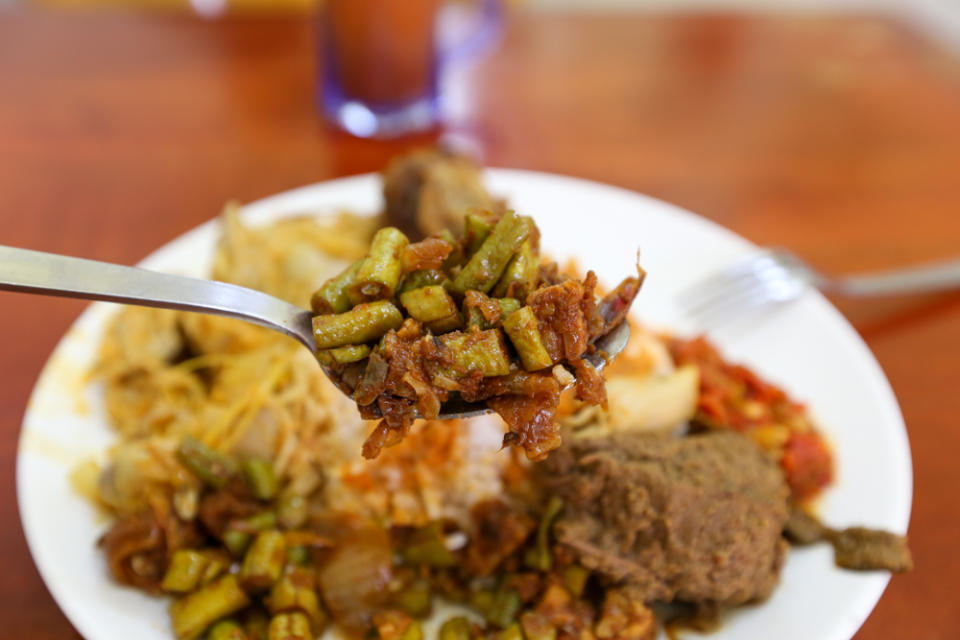
The Sambal Goreng intrigued me because the long beans had been snipped into tiny, one inch-long pieces, and it came with plenty of other ingredients, such as tempeh, tofu, onions and sambal.
Every spoonful of Sambal Goreng melded together to create a crunchy bite that was packed with umami-filled flavours. I loved that the tempeh had been cut into small pieces as well, so that the fermented notes would permeate everything I ate.
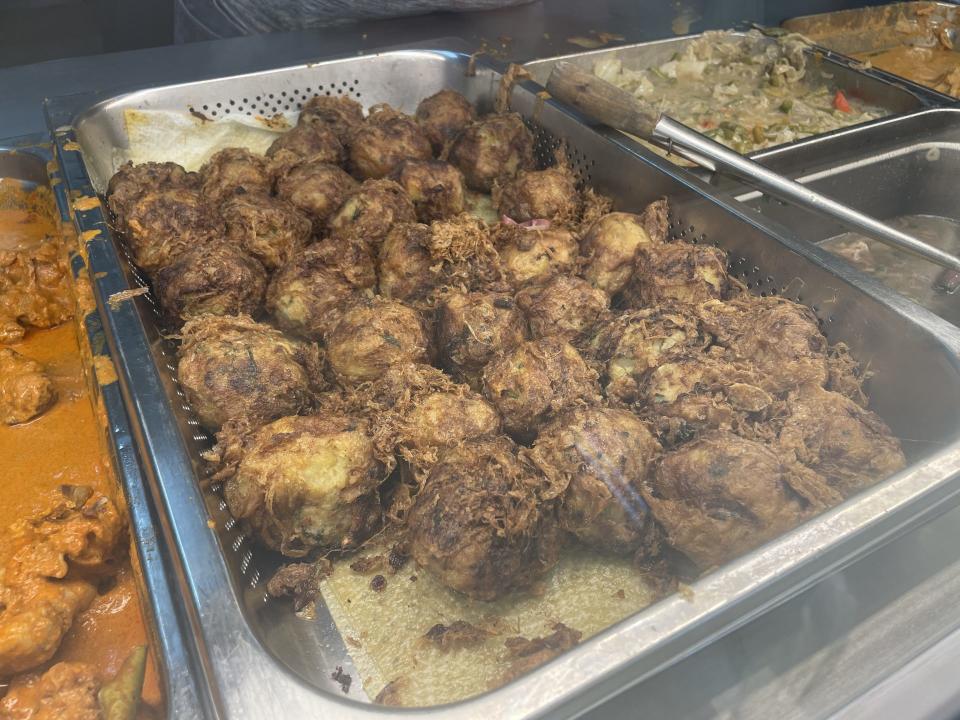
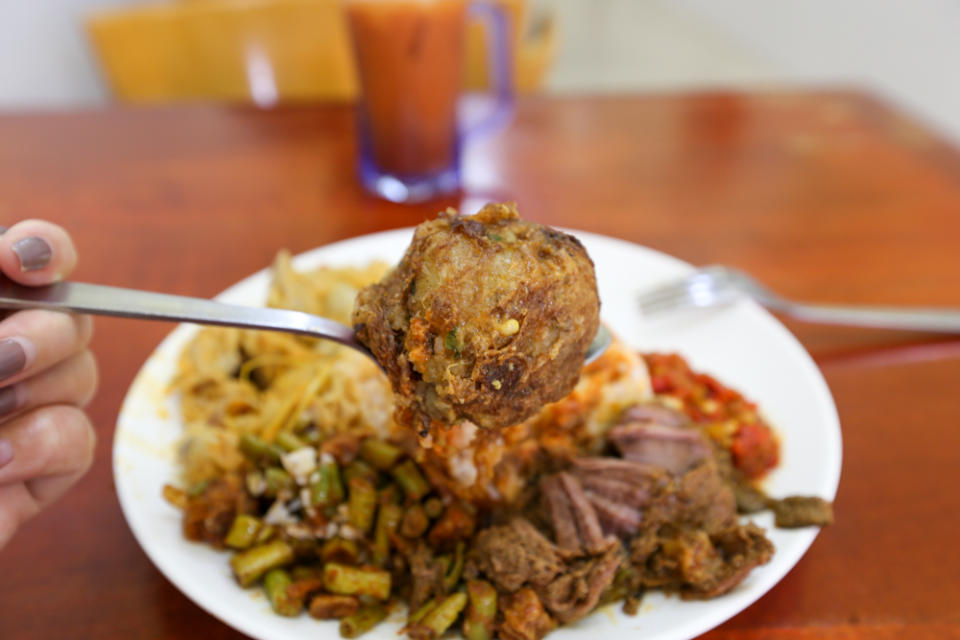
I had zero intentions of adding anything else to my plate, but all it took was one look at Warong Nasi Pariaman’s giant Bagedel (S$1) and I was sold.
In fact, at first sight, I didn’t believe these were Bagedel because they were larger than golf balls or meatballs! Funnily enough, they were the same size as my piece of Beef Rendang. How ironic.
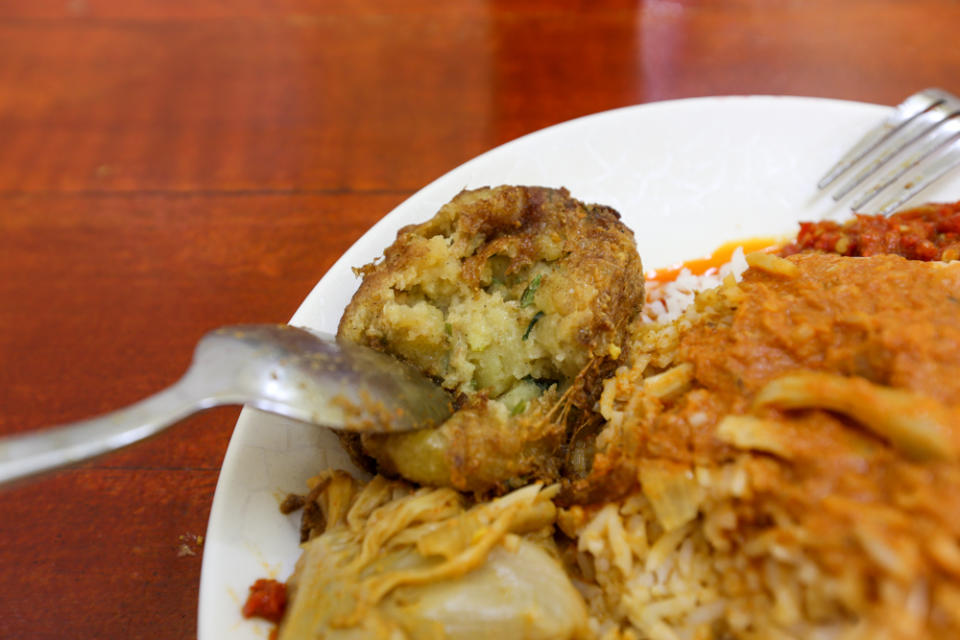
This was unlike any other Bagedel I’ve had. There were actual chunks of potato cubes inside, as well as mashed potatoes and other green vegetables. In some way, the creamy filling reminded me of potato salad, just without the mayo. Unfortunately, the Bagedel I had was too salty, as if someone had accidentally added too much salt and pepper.
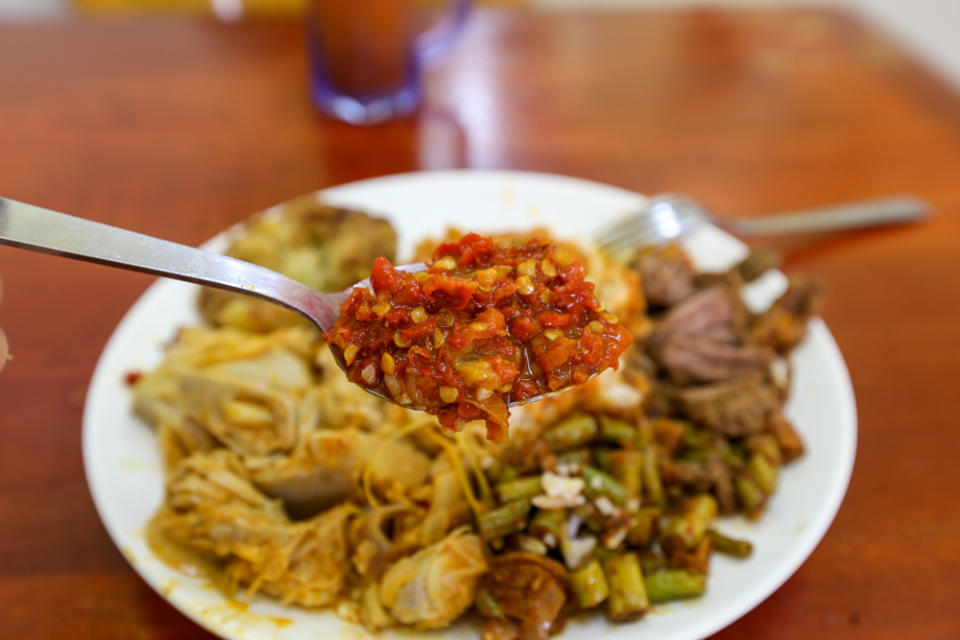
The best part about my meal at Warong Nasi Pariaman was the Sambal. Though it looked lethally spicy, it was fantastically smoky, as if the chillies had been roasted over a charcoal fire. The aroma of thick smoke lingered in my mouth before and after each mouthful.
Final thoughts
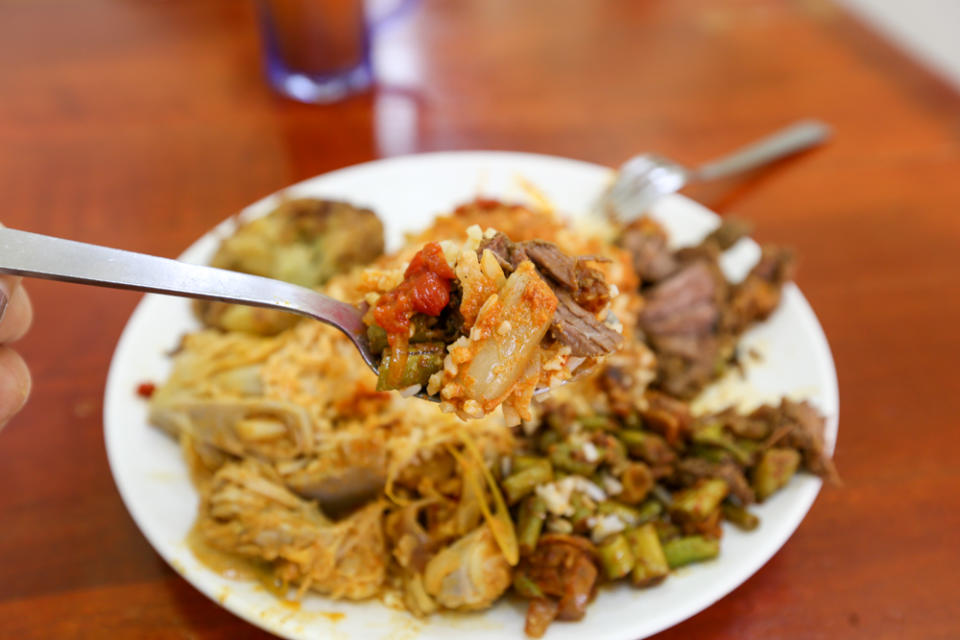
After dining at Warong Nasi Pariaman, I finally understood how this humble family-run restaurant has managed to survive 6 decades in thriving, modern Singapore. Though it’s not the cheapest nasi padang I’ve had (I’m talking about you, my S$4.50 Beef Rendang), I can definitely see myself coming back here for more.
The food is simple yet so perfectly cooked, with traditional tried-and-tested cooking techniques that have survived the test of time. The crowd speaks for itself, with diners from every race, religion and age filling up the tables in this no-frills coffee shop just for a taste of traditional nasi padang.
With each plate of nasi padang being a testament to its rich history, Warong Nasi Pariaman is a must-try, especially for all you nasi padang lovers out there.
Expected damage: S$8 – S$20 per pax
The post Warong Nasi Pariaman: Possibly SG’s oldest surviving nasi padang stall, dating back to 1948 appeared first on SETHLUI.com.


